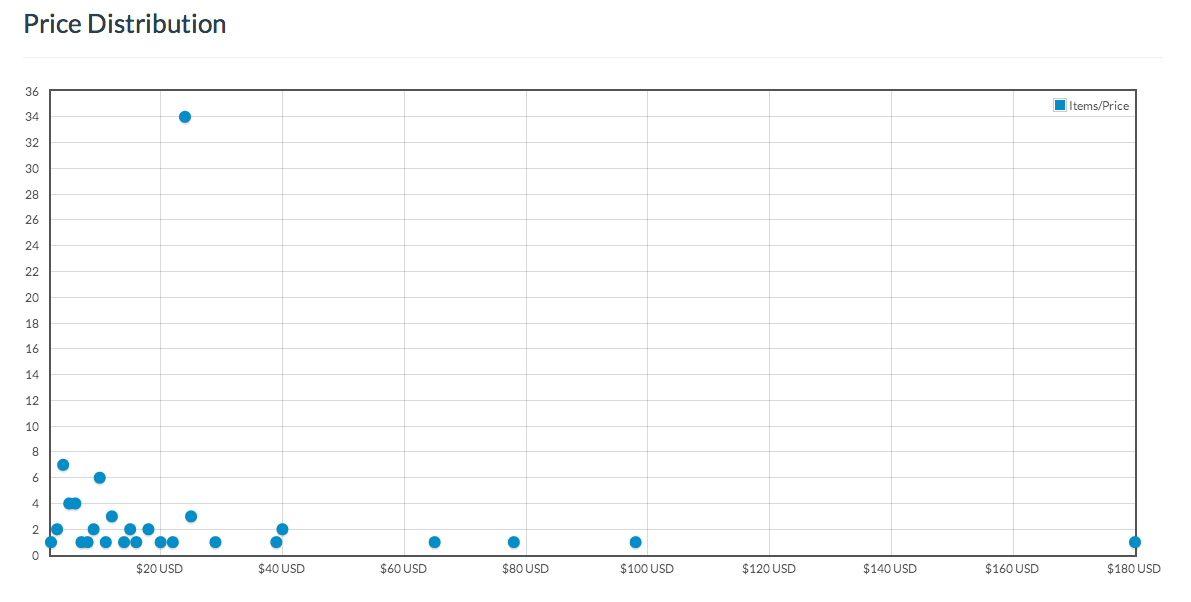I am working in a hobby project, and I'd like some help with the following problem:
I'm pulling pricing information from an internet marketplace, so if I provide a keyword (say, iphone cases) I'm going to get the first 500 items that show up in that marketplace, along with their prices.
My question is, how can I properly visualize price distribution, so that I can get meaningful information?
I've tried scatter plots, but I don't think the graph tell me much about the prices in that marketplace:

I've also tried to plot the mean, and the standard deviation in the scatter plot, but I'm not sure if I'm mixing pears and apples, when I plot those values in a scatter chart.
I'm not a data miner, nor a stats person. I'm doing this just as a hobby and using this small project as a personal learning experience.
Any help would be greatly appreciated.
